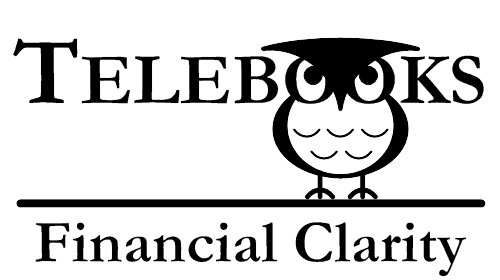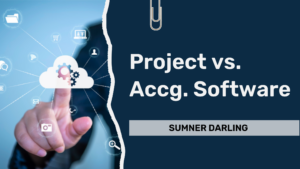Introduction
Are you tired of dealing with messy billing processes? Do late payments and administrative headaches slow down your architecture firm? You’re not alone. Many firms struggle to streamline billing for architecture firms, but it doesn’t have to be this way. With the right systems in place, you can simplify your billing, save time, and strengthen client relationships.

In this post, we’ll walk through a recommended workflow to streamline your billing process. You’ll learn how to use automation tools, leverage software, and set clear expectations with clients to reduce overhead, improve cash flow, and create a smoother billing experience. Along the way, we’ll provide a real-world example and answer common objections architecture firms have about billing.
Let’s get started.
A Workflow to Streamline Billing for Architecture Firms

Sign Contract Agreement
The billing process starts long before you send an invoice. It begins with the contract. A clear, detailed contract is essential for smooth billing. Why? Because it outlines the scope of work, fee structure, and payment terms upfront. Without this, confusion can arise later on. Make sure both you and your client agree on all details before the project kicks off.
Follow Payment Terms
Once the contract is signed, stick to the agreed payment terms. Whether you’re billing based on project phases, hours worked, or a percentage of construction costs, make sure your invoicing matches the terms in your contract. Consistency here helps avoid disputes and keeps cash flow steady.
Track Time and Expenses
Tracking time and expenses accurately is critical for accurate billing. Record billable hours and project-related costs in real-time to ensure you don’t miss anything, whether you charge hourly or by project milestones. Automated time-tracking tools can help keep things organized without adding extra work.
Generate Invoices
With time and expenses tracked, it’s time to generate your invoices. To streamline billing for architecture firms, invoicing should be clear, detailed, and automated whenever possible. Using invoicing software can save time and reduce the likelihood of errors, keeping everything consistent.
Send Invoices to Clients
When you want to streamline billing for architecture firms, timely invoicing is key. Don’t wait until the project is complete. Send invoices regularly according to your payment terms—whether that’s monthly or tied to project phases. Send the invoice via email or a client portal, whichever your client prefers, to streamline the payment process
Receive Payments
Once invoices are sent, it’s time to receive payments. Ideally, payments should come in on time, but that’s not always the case. To avoid delays, consider offering multiple payment options like ACH transfers or credit card payments. Automated payment reminders can help ensure clients don’t forget.
Monitor Cash Flow
Are you keeping track of your incoming payments? Monitoring your cash flow weekly helps you stay ahead of any financial surprises. Accounting software can provide real-time insights into what’s been paid, what’s overdue, and when future payments are expected, helping you manage your firm’s finances effectively.
Manage Retainers and Deposits
Some projects may require a retainer or deposit before work begins. Managing these funds properly is crucial for maintaining cash flow throughout the project. Deduct retainer amounts from final invoices or apply them as work progresses. This helps ensure you’re financially covered upfront.
Strategies to Reduce Billing Administrative Overhead

Set Clear Expectations with Clients
Transparency goes a long way when you’re trying to streamline billing for your architecture firm. Setting clear expectations with your clients from the start—about billing schedules, payment terms, and project milestones—can help prevent confusion and late payments. When clients know what to expect, they’re more likely to pay on time and trust the process.
- Pro Tip: Schedule a brief meeting at the start of the project to discuss payment terms and expectations with your client. This simple step can prevent misunderstandings later on.
Automate Time and Expense Tracking
Still tracking time and expenses manually? Automating time tracking is one of the most effective ways to streamline billing in architecture firms and reduce administrative workload. Tools like Harvest, Monograph, and BigTime can help you to track billable hours and project-related expenses in real-time. No more manual entries, no more lost hours. Time tracking software tools save time and ensure nothing gets missed.
Standardize Invoicing with Templates
Why spend time creating custom invoices every time? Standardized invoice templates streamline the process. By using pre-configured templates that include essential details like payment terms and itemized costs, you can generate invoices quickly and consistently. Invoicing software can help automate this, saving hours each billing cycle.
Leverage Software for Contract and Payment Terms
Many invoicing and project management tools allow you to tie contracts and payment terms directly into the billing system. Billing rules, such as when payments are due and how much to bill at each milestone, are already built in. By leveraging software to manage contracts, you’ll ensure every invoice is accurate and sent on time.
Enable Easy Payment Options
Making it easier for clients to pay results in faster payments. Offer flexible payment options like ACH transfers, credit cards, or payment plans for larger projects. By giving clients multiple ways to settle invoices, you reduce friction and encourage timely payments.
Use Financial Reporting Tools for Cash Flow Monitoring
To stay on top of your firm’s financial health, use financial reporting tools. Accounting software with real-time cash flow insights can help you monitor the status of payments, project cash flow trends, and even forecast future income. This allows you to plan ahead and make informed financial decisions for your firm.
Delegate Non-Core Tasks
You don’t need to handle every billing task yourself. By delegating non-core tasks like invoicing and payment follow-ups to an office administrator, you can focus on design and client relationships. Make sure they follow a well-defined process to ensure consistency. This lightens your administrative load and ensures billing gets done efficiently.
Improve Continuously
Your billing process isn’t set in stone. Periodically review your workflow to identify bottlenecks or inefficiencies. Are there new tools you could use? Are clients consistently late with payments? By continuously improving your processes, you’ll stay ahead of issues and keep your billing running smoothly.
Addressing Common Objections

Automating Time Tracking Seems Complicated
Setting up time-tracking automation might seem daunting, but it’s easier than you think. Most software platforms like BigTime or Monograph offer guided support or tutorials. Once set up, it saves you hours every week by removing the need for manual entries.
Standardized Invoices Won’t Fit My Firm’s Unique Needs
Many invoicing software platforms allow you to customize standardized templates, so they reflect your firm’s specific needs. You can still have flexibility while benefiting from the time-saving aspects of using templates.
Can I Trust Software with Important Contract Details?
Platforms like 17hats and PandaDoc centralize your contract details, making them easy to retrieve. You can also set up notifications to alert you of key project milestones, ensuring that nothing slips through the cracks.
I Don’t Have Time to Learn Financial Tools
Many accounting platforms like QuickBooks provide easy-to-read dashboards and automated reports. Once set up, these tools make it easy to monitor cash flow, and you won’t have to spend hours sifting through spreadsheets.
Can I Really Trust Someone Else with Billing Tasks?
Delegating billing tasks to an office administrator may feel risky at first, but establishing clear Standard Operating Procedures (SOPs) ensures consistent and accurate work. Training is key to ensuring trust.
Real-World Example: Streamlining Billing at Elemental Architects
Let’s bring this concept to life with a real-world example. The following example illustrates how a small architecture firm might leverage best practices for billing. While Elemental Architects is fictional, the tools and strategies are real and practical for firms like yours.

Elemental Architects, a five-person architecture firm, faced numerous challenges with their billing process. They tracked time manually, which led to missed hours. Invoicing took up hours of administrative work every month, and late payments from clients were common. Their goal was to reduce the administrative burden, improve cash flow, and create a smoother billing process for both their team and clients.
Set Clear Expectations with Clients
Before starting any new project, Elemental Architects set clear expectations with their clients regarding billing schedules, payment terms, and project milestones. Setting clear expectations with clients is one of the most important steps to streamline billing for architecture firms. By having these discussions up front, clients knew exactly what to expect in terms of invoicing and payment deadlines, reducing confusion and building trust.
Sign Contract Agreement and Follow Payment Terms
At the start of each project, Elemental Architects used 17hats to manage their contracts and clearly define payment terms. This software allowed them to create and sign contracts digitally, making the process faster and more organized. They set specific billing milestones tied to project phases to ensure regular payment scheduling, which reduced cash flow issues.
Automate Time and Expense Tracking
Previously, the team manually tracked their hours, often forgetting to log smaller tasks. To resolve this, Elemental Architects implemented BigTime Software to automate time tracking. The team easily logged hours from any device, and the system automatically assigned all billable time to the appropriate project. This not only improved the accuracy of their billing but also saved the team hours of administrative work each month.
Generate and Send Invoices with Standardized Templates
Invoicing was one of the biggest bottlenecks for the firm. They created each invoice manually, which consumed valuable time. By switching to BigTime Software, Elemental Architects standardized their invoicing process using templates that auto-populated with project details and payment terms. They also set up recurring invoices for projects that spanned multiple months, saving additional time. They sent invoices automatically at the agreed milestones, ensuring timely delivery.
Enable Easy Payment Options and Automated Reminders
To address late payments, Elemental Architects began offering clients flexible payment options through BILL (formerly Bill.com), allowing them to pay via ACH or credit card. This made it easier for clients to settle their invoices. They also set up automated payment reminders, reducing the need for follow-up emails and improving the firm’s payment timeline.
Monitor Cash Flow Using Financial Reporting Tools
With payments coming in more reliably, Elemental Architects needed a way to monitor their cash flow and stay on top of finances. Using the reporting tools in BigTime Software, they were able to generate real-time cash flow reports and forecast their financial health. This allowed them to project upcoming payments and better manage their budget, ensuring the firm stayed financially stable.
Delegate Non-Core Billing Tasks
Recognizing the value of delegation, Elemental Architects assigned their office administrator to manage invoicing and follow-up on overdue payments. By establishing clear Standard Operating Procedures (SOPs), the administrator followed a structured workflow, ensuring billing tasks were completed efficiently and accurately.
Improve Continuously
Elemental Architects understood that billing processes can always be refined. To manage their workflows efficiently, they used Microsoft Word to document their Standard Operating Procedures (SOPs) and keep them updated under configuration management. This allowed them to track changes and ensure that all team members were working with the latest version of the workflows.
Additionally, they used 17hats to implement these workflows as recurring tasks within a cloud-based platform. Elemental Architects automated recurring tasks like invoicing and payment follow-ups, ensuring important billing processes were handled consistently and on schedule. This combination of clear documentation and task automation helped them continuously improve their billing efficiency and adapt to new challenges as they arose.
Results
By following this streamlined billing workflow and implementing automation, Elemental Architects reduced their administrative burden by 30%, improved payment timeliness by 20%, and saved hours each month that could be redirected to design work. This new system not only improved their internal efficiency but also provided a better experience for their clients, making the billing process more transparent and easier to manage.
Conclusion
Streamlining your billing process isn’t just about cutting down on administrative work—it’s about improving your entire financial workflow. By automating tasks, leveraging the right software, and setting clear expectations with clients, you’ll create a system that saves time, reduces errors, and improves your cash flow. By following these best practices, you’ll streamline billing for your architecture firm, save time, and enhance client relationships.
Are you looking for more strategies to improve your architecture firm’s financial processes? Subscribe to our blog for actionable insights, or visit Telebooks Network, where we teach owners and staff of small architecture firms how to manage in-house bookkeeping, payroll, and billing with confidence.




